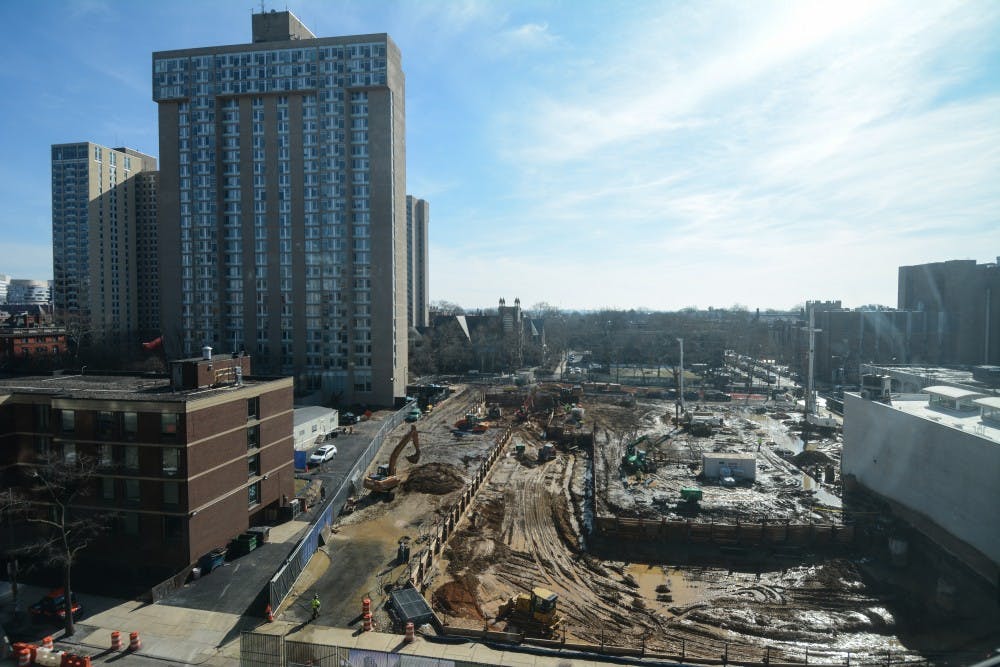Since Penn President Amy Gutmann's appointment in 2004, she has overseen Penn Connects, which serves as the physical manifestation of her vision for the University and included the construction of New College House, Penn Park, and the Singh Center for Nanotechnology. Now, the University’s long-term campus renovation plan is in the middle of its third iteration.
University Architect Mark Kocent, who works with Facilities and Real Estate Services, said Penn Connects 3.0 launched in 2017 and is currently on schedule to be completed by 2022.
The project includes improvements to existing structures and the construction of new buildings, specifically Penn's record-breaking $163 million dorm hall New College House West. Penn Connects 3.0 also includes efforts to improve sustainability on campus.
“One of our most sustainable goals on campus is to reinvest in existing buildings,” Kocent said.
Recent projects include the renovation of the Kelly Writers House and the Penn Museum. The Kelly Writers House reopened in January with increased space, improved acoustics, and technological upgrades for webcasting. Renovations in the Palestra and Franklin Field are also currently being considered.
Penn Connects 3.0 follows Penn Connects 1.0 and 2.0, the first and second iterations of the University's campus renovation plan. Penn Connects 1.0 began after Gutmann's appointment in 2004 and focused on enhancing previous design initiatives, including Locust and Woodland Walks. Penn Connects 2.0 began in 2006 and largely focused on developing a "major physical presence for Penn along the Schuylkill River," including Pennovation Works. Nearly all of the projects developed in Penn Connects 1.0 and 2.0 have been or will soon be completed, according to the Penn Connects website.
Kocent explained that the renovation plans outlined in Penn Connects stem from the Penn Compact 2020, a list of Gutmann's strategic goals for the University.
“[Penn Connects] is kind of a broad picture of what the school’s vision for themselves is,” Kocent said.
RELATED:
New College House West construction on schedule for fall 2021 opening
Penn President Amy Gutmann receives prestigious 2018 William Penn Award
Kocent also outlined the process of how students can provide input in the design of buildings, which includes surveys and mockups of bedrooms and bathrooms. Recently, such surveys were sent out during the construction of NCHW.
College and Wharton junior Maria Curry, who is also the Undergraduate Assembly Dining, Housing, and Transit director, echoed the importance of student input in campus renovation plans.
Administrative services typically reach out to students as part of relevant programs when specific buildings are renovated or built, Curry said. But a common issue she notices is that students often do not participate in voicing their opinions to the administration.
“I think it’s more of a communication issue,” Curry said.
Moving forward, Curry cited the bedroom and bathroom design survey that will be distributed to students as NCHW — which is set to open in 2021 — nears its completion. She also wants to improve the ways in which student input is gathered and considered in campus facilities' plans, a project she believes will continue after her graduation.
“I want students to know they have the opportunities they currently have and I want to market those opportunities better,” Curry said.









